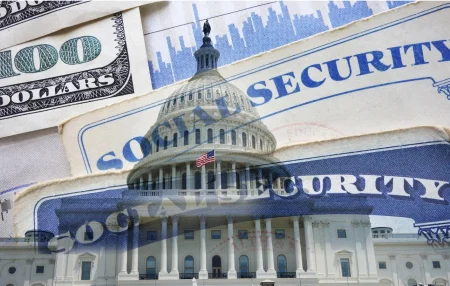The Hidden Value of Private College Education: Scholarships Make Higher Education More Affordable Than You Think
In an era where college education has become increasingly expensive, the sticker price of private colleges can be particularly intimidating. For the 2024-25 academic year, the average advertised tuition at four-year private colleges reached a staggering $43,350, representing a 3.9% increase from the previous year according to the College Board. When room, board, and other expenses are factored in, the total cost of attendance (COA) climbs to an eye-watering average of $62,990. These figures might lead many prospective students and their families to dismiss private education as financially unattainable, but the reality is far more nuanced and potentially encouraging.
What most people don’t realize is that private colleges operate on a unique pricing model that involves significant discounting. Nearly every private institution in the United States employs a strategy of setting high sticker prices but then offering substantial financial aid packages that dramatically reduce the actual cost for students. This practice stems from various motivations including maintaining prestige, competing for enrollment, and ensuring student body diversity. The result is remarkable: the average net tuition and fees students actually pay after federal, state, and institutional grants are factored in amounts to just $16,510—a 62% discount from the listed price. When considering the total cost of attendance, the average discount is 43%, bringing the net COA down to $36,150. The key insight here is that very few students pay the full advertised price, and determining what you’ll actually pay requires investigation through net price calculators or federal websites that list average net prices for each institution.
Forbes has identified 25 private colleges from their Top Colleges ranking that offer particularly generous financial aid packages to first-time, full-time undergraduates. These institutions stand out for two key reasons: at least 95% of their students receive some form of grant aid (with 20 of the schools providing aid to 100% of students), and their scholarships cover at least half of the total cost of attendance, with some covering as much as 80%. Washington & Jefferson College in Pennsylvania exemplifies this generosity, offering an average scholarship of $35,647, which covers more than 80% of the $44,295 annual cost of attendance. This liberal arts college, which accepts about 80% of applicants, provides a 12:1 student-to-faculty ratio and requires freshmen to complete a “first year seminar” featuring lectures, concerts, plays, and cultural trips built around a common theme. The college’s picturesque 60-acre suburban campus even served as the filming location for Netflix’s 2021 academic dramedy “The Chair.”
Some institutions take unique approaches to affordability. Berea College in Kentucky has eliminated tuition entirely, instead requiring students to participate in a work-study program for at least 10 hours weekly. Jobs range from hospitality work at the college-owned Boone Tavern Hotel to crafting, janitorial work, and groundskeeping. Students receive an average scholarship of $41,626, covering about 70% of the $60,718 total cost of attendance. The college boasts impressive diversity metrics—19% of students are Black, 15% Hispanic, 44% white, and 8% international. Similarly distinctive, Soka University of America in California, founded by Buddhist leader Daisaku Ikeda, offers all students scholarship money averaging $32,579 (covering about 60% of costs) and follows an interdisciplinary curriculum without traditional academic departments. All Soka students must study a non-native language for at least two years and spend a semester abroad in a country speaking their chosen language—with study abroad fees included in the regular tuition price.
Many of these generous institutions combine financial accessibility with academic innovation and excellence. The College of Wooster in Ohio provides an average scholarship of $42,063 (covering 55% of attendance costs) and maintains a vibrant campus community where nearly all students live on-site among approximately 30 active Greek chapters. Fifteen percent of Wooster’s student body consists of international students, and the college maintains a sister school relationship with Ewing Christian College in India. For those interested in specific academic focuses, options abound: Lawrence University in Wisconsin is renowned for its Conservatory of Music while offering strong liberal arts programs; The Cooper Union in New York City continues its founder’s vision of accessible education by offering substantial aid while maintaining a highly selective 12% acceptance rate across its engineering, art, and architecture schools; and Menlo College in California leverages its Silicon Valley location to provide business-focused education with internship opportunities at tech giants like Google, Apple, and Facebook.
The geographical diversity of these generous institutions means students from across the country can find affordable private education options relatively close to home. From Albion College in Michigan (where students receive average scholarships covering 66% of costs) to Centre College in Kentucky (offering aid covering 53% of expenses while producing over 70% of Kentucky’s Rhodes Scholars in the past 50 years), these schools demonstrate that private education can be financially accessible. Research-focused institutions like the University of Tulsa, Illinois Institute of Technology, and Clarkson University provide substantial aid while offering specialized programs in engineering, computer science, and other technical fields. Meanwhile, liberal arts colleges like St. Olaf in Minnesota, DePauw in Indiana, and Augustana in Illinois maintain strong traditions in humanities and sciences while ensuring financial accessibility through institutional aid. The common thread among all these institutions is their commitment to making private education affordable through generous scholarship programs that significantly reduce the actual cost students pay compared to advertised prices.














